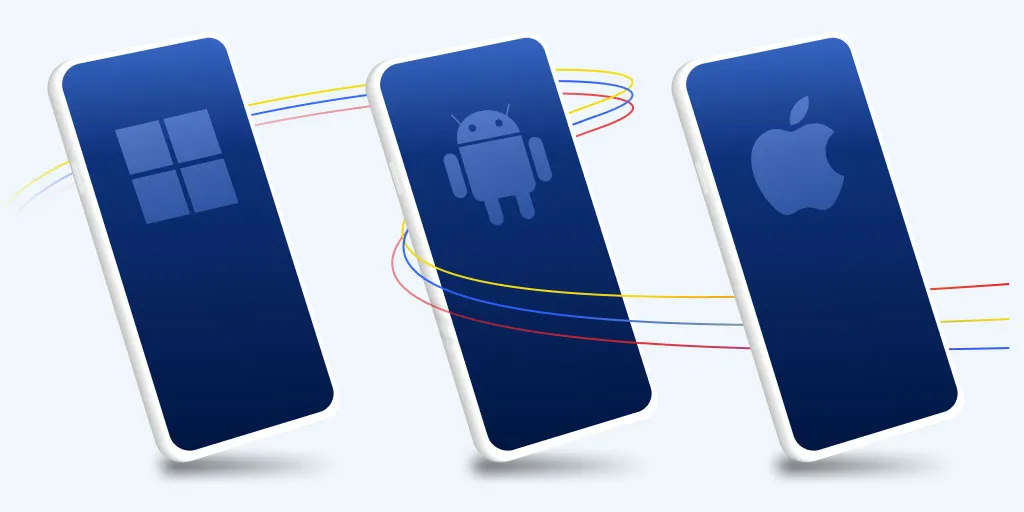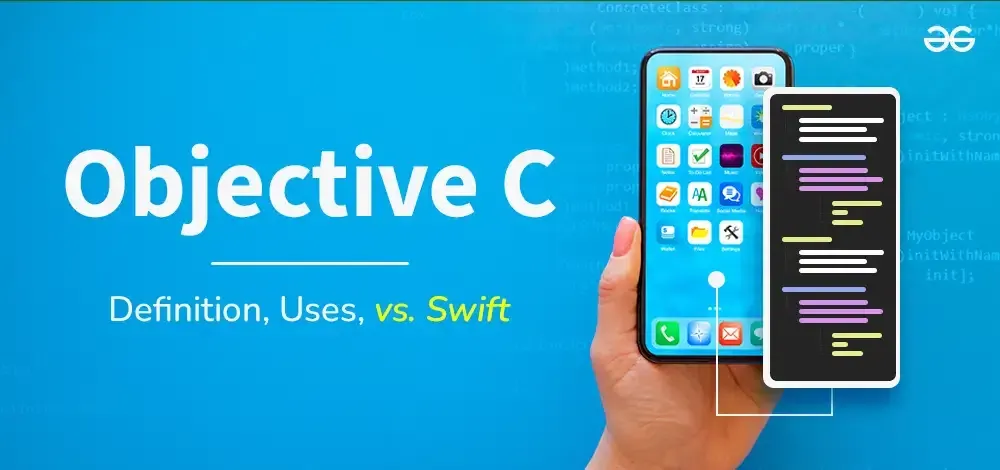Welcome to the world of Android app development, where the choice of programming language can significantly impact the success of your app. In this comprehensive article, we’ll explore the five most popular languages used for creating Android applications, as highlighted in the article. From the well-established Java to the rising star, Kotlin, we’ll delve into the unique features, advantages, and use cases of each language, empowering you to make an informed decision for your next Android project.
Java: The Cornerstone of Android Development

Java has long been the go-to language for Android app development, and for good reason. Its robust syntax, extensive library support, and widespread use in the industry make it a reliable choice for creating powerful and scalable Android applications.
Advantages of Java for Android Development
- Mature and Established: Java has been around for decades, and its ecosystem is well-developed, with a vast community of developers, extensive documentation, and a wide range of libraries and frameworks.
- Cross-Platform Compatibility: Java’s “write once, run anywhere” philosophy makes it a versatile choice, as your code can be easily ported to other platforms, including iOS and desktop applications.
- Performance and Efficiency: Java’s optimized runtime environment, the Java Virtual Machine (JVM), ensures efficient memory management and high-performance execution of your code.
- Robust and Secure: Java’s strong type-checking and memory management features help prevent common programming errors, making your apps more secure and reliable.
- Enterprise-Level Support: Java’s widespread adoption in the enterprise world means that it benefits from extensive tooling, IDE support, and enterprise-grade development practices.
Java in Action: Real-World Examples
- Google Play Services: Many of the core Google Play services, such as the Google Maps API and the Google Play In-App Billing API, are designed to work seamlessly with Java-based Android apps.
- Android Operating System: The Android operating system itself is largely written in Java, making it a natural choice for developers who want to integrate closely with the platform.
- Popular Apps: Numerous popular Android apps, such as Facebook, Twitter, and Instagram, have been developed using Java, showcasing its suitability for building complex and feature-rich applications.
Limitations and Considerations
- Verbosity: Java can be more verbose compared to some other programming languages, which may result in longer development times for certain tasks.
- Memory Management: While the JVM handles memory management, developers still need to be mindful of memory usage and potential memory leaks.
- Steep Learning Curve: For developers new to Java, the language’s syntax and object-oriented programming principles can present a steeper learning curve compared to some other Android app development languages.
Kotlin: The Rising Star of Android Development
Kotlin, a modern, concise, and expressive programming language, has been gaining significant traction in the Android development community. Officially supported by Google since 2017, Kotlin offers a range of features and benefits that make it an increasingly popular choice for Android app development.
Advantages of Kotlin for Android Development
- Conciseness and Readability: Kotlin’s syntax is more succinct and expressive than Java, often resulting in fewer lines of code and more readable, maintainable code.
- Interoperability with Java: Kotlin is fully interoperable with Java, allowing developers to seamlessly integrate Kotlin and Java code within the same project.
- Improved Developer Productivity: Kotlin’s features, such as null safety, extension functions, and lambda expressions, can help developers write code more efficiently and with fewer errors.
- Functional Programming Support: Kotlin embraces functional programming concepts, making it easier to write concise and expressive code that is less prone to bugs.
- Increased App Performance: Kotlin’s optimized compilation and runtime performance can contribute to faster app startup times and more efficient resource usage.
Kotlin in Action: Real-World Examples
- Google’s Adoption: Google’s endorsement of Kotlin as an official language for Android development has been a significant factor in its growing popularity.
- Jetpack Compose: The new Jetpack Compose UI toolkit, which is Google’s recommended approach for building modern Android user interfaces, is designed with Kotlin in mind.
- Popular Apps: Many well-known Android apps, including the Slack and Pinterest apps, have been developed using Kotlin, demonstrating its suitability for building complex and feature-rich applications.
Limitations and Considerations
- Newer Language: As a relatively new language, Kotlin may have a smaller developer community and ecosystem compared to more established languages like Java.
- Tooling and IDE Support: While Kotlin benefits from strong support from major IDEs like Android Studio, the tooling ecosystem may not be as mature as that of Java.
- Learning Curve: While Kotlin is generally easier to learn than Java, developers with a strong Java background may still need to invest time in learning Kotlin’s syntax and idioms.
C#: A Versatile Choice for Android Development, a powerful and versatile programming language, has also found its place in the world of Android app development. Primarily associated with the .NET ecosystem, C# has been gaining ground as a viable option for building Android applications, thanks to the Xamarin framework.
Advantages of C# for Android Development
- Cross-Platform Capabilities: With the Xamarin framework, developers can write C
code that can be shared across multiple platforms, including Android, iOS, and Windows.
- Familiarity for .NET Developers: Developers with a background in C
and the .NET ecosystem can leverage their existing skills and knowledge to build Android apps.
- Robust Tooling and IDE Support: C
benefits from the extensive tooling and IDE support provided by Microsoft Visual Studio, a popular choice for enterprise-level software development.
- Access to .NET Standard Libraries: Developers can take advantage of the vast library of .NET Standard libraries, which can be used in Xamarin-based Android apps.
- Performance and Efficiency: C
and the .NET runtime have a reputation for delivering high-performance and efficient applications, which can be beneficial for Android app development.
C# in Action: Real-World Examples
- Enterprise-Grade Applications: The cross-platform capabilities of Xamarin make C
a popular choice for building enterprise-level Android apps that need to integrate with other systems.
- Business-to-Business (B2B) Apps: C
-based Xamarin apps are often used in the B2B space, where the ability to share code across multiple platforms is a significant advantage.
- Game Development: C
is a popular language for game development, and its use in Xamarin-based Android games has been on the rise.
Limitations and Considerations
- Ecosystem and Community: While the C
and .NET ecosystem is robust, the Android-specific Xamarin community may be smaller compared to the Java and Kotlin communities.
- Performance Overhead: The use of the Xamarin framework can introduce some performance overhead compared to native Android development, which is something developers need to be mindful of.
- Licensing and Costs: Depending on the specific tools and services used, the costs associated with C
-based Android development may be higher than those of Java or Kotlin-based development.
Flutter: The Cross-Platform Powerhouse

Flutter, Google’s open-source cross-platform framework, has gained significant traction in the world of mobile app development, including Android. By leveraging the Dart programming language, Flutter enables developers to build high-performance, visually appealing Android apps with a single codebase.
Advantages of Flutter for Android Development
- Cross-Platform Capabilities: Flutter allows developers to create Android and iOS apps from a single codebase, significantly reducing development time and costs.
- Performance and Responsiveness: Flutter’s use of the Dart language and its own rendering engine allows for smooth, high-performance, and responsive user interfaces.
- Rich and Customizable UI: Flutter’s extensive widget library and powerful theming capabilities enable developers to create visually stunning and highly customized Android apps.
- Faster Development Cycles: The hot reload feature in Flutter allows developers to quickly see the changes they make to the code, accelerating the development and iteration process.
- Growing Ecosystem: The Flutter ecosystem is rapidly expanding, with a wide range of plugins, libraries, and tools available to enhance app development.
Flutter in Action: Real-World Examples
- Google Apps: Google has embraced Flutter for some of its own apps, such as the Google Ads app and the Google Shopping app, showcasing the framework’s capabilities.
- Popular Apps: Many well-known Android apps, including Alibaba, Tencent, and Nubank, have been built using Flutter, demonstrating its suitability for developing complex and feature-rich applications.
- Startups and Enterprises: Flutter has found adoption among both startups and large enterprises, as it allows them to quickly build and deploy high-quality Android apps.
Limitations and Considerations
- Ecosystem Maturity: While the Flutter ecosystem is growing rapidly, it may not be as mature as the ecosystems for more established Android development languages like Java and Kotlin.
- Performance on Legacy Devices: Flutter’s strong performance may be more challenging to achieve on older or lower-end Android devices, which can impact the user experience.
- Learning Curve: Developers new to Flutter and the Dart language may need to invest time in learning the framework’s concepts and best practices.
React Native: The JavaScript-Powered Approach
React Native, a cross-platform framework developed by Facebook, has become a popular choice for building Android apps. By leveraging the power of JavaScript and the React library, React Native allows developers to create native-looking Android applications with a familiar development experience.
Advantages of React Native for Android Development
- Cross-Platform Development: React Native enables developers to build Android and iOS apps using a single codebase, similar to Flutter, reducing development time and costs.
- JavaScript and React Ecosystem: Developers with existing knowledge of JavaScript and the React library can leverage their skills to build Android apps, lowering the learning curve.
- Native-like User Experience: React Native aims to deliver a native-like user experience by providing a set of native UI components that are rendered directly to the device’s native platform.
- Live Reloading: The live reloading feature in React Native allows developers to see the changes they make to the code in real-time, enhancing the development workflow.
- Large and Active Community: The React Native community is large and active, with a wealth of resources, libraries, and tools available to support Android app development.
React Native in Action: Real-World Examples
- Facebook and Instagram: Facebook and Instagram, both developed using React Native, are prime examples of the framework’s capabilities for building complex and feature-rich Android apps.
- Airbnb: Airbnb has adopted React Native for a significant portion of its Android app, highlighting the framework’s suitability for large-scale, enterprise-level applications.
- SoundCloud: SoundCloud’s Android app is another prominent example of a successful React Native implementation, demonstrating the framework’s versatility.
Limitations and Considerations
- Performance on Complex Interfaces: While React Native aims to deliver a native-like experience, it may face challenges in delivering optimal performance on highly complex or graphics-intensive Android user interfaces.
- Debugging and Troubleshooting: Debugging and troubleshooting issues in a React Native-based Android app can sometimes be more complex compared to native Android development.
- Dependency on the React Native Community: Developers building React Native apps for Android are heavily dependent on the continued support and evolution of the React Native framework and its ecosystem.
Swift: The iOS-Focused Approach for Android Development

Swift, Apple’s modern programming language for iOS development, has also found its way into the Android ecosystem through the use of cross-platform tools and frameworks. While not as commonly used for Android development as the other languages mentioned, Swift can be a viable option for developers with a strong iOS background.
Advantages of Swift for Android Development
- Familiarity for iOS Developers: Developers who are already well-versed in Swift and the iOS ecosystem can leverage their existing skills and knowledge to build Android apps.
- Potential Code Sharing: Cross-platform tools and frameworks, such as React Native and Flutter, allow for a certain degree of code sharing between iOS and Android apps, potentially increasing development efficiency.
- Expressive and Concise Syntax: Swift’s modern syntax and features, such as type safety and automatic memory management, can enhance developer productivity and code readability.
- Growing Android Tooling: While not as extensive as the tooling for iOS development, the Android ecosystem is gradually improving its support for Swift-based development through frameworks and tools.
Swift in Action: Real-World Examples
- Cross-Platform Apps: Some developers have leveraged cross-platform frameworks like React Native and Flutter to create Android apps using Swift, particularly in cases where they have an established iOS codebase.
- Specific Use Cases: Swift may be used for Android development in certain niche scenarios, such as games or applications that require tight integration with the iOS ecosystem.
Limitations and Considerations
- Lack of Native Android Support: Unlike the other languages mentioned, Swift is not natively supported by the Android platform, requiring the use of cross-platform tools and frameworks to bridge the gap.
- Ecosystem and Tooling Maturity: The Android ecosystem’s support for Swift-based development is still relatively limited compared to the tooling and resources available for Java, Kotlin, and other native Android development languages.
- Specialized Use Cases: Given the lack of native Android support, Swift is typically only used for Android development in specific scenarios where the benefits of code sharing or iOS familiarity outweigh the drawbacks.
Conclusion
In the ever-evolving world of Android app development, the choice of programming language is a crucial decision that can significantly impact the success of your application. The five languages highlighted in this article – Java, Kotlin, C
, Flutter, and React Native – each offer unique advantages, use cases, and considerations for developers to explore.
As you embark on your next Android project, carefully evaluate the requirements, your team’s skill sets, and the specific needs of your application. Consider the maturity of the language’s ecosystem, the availability of libraries and tooling, and the performance and user experience you aim to deliver. By making an informed decision, you can leverage the strengths of these languages to create innovative, efficient, and engaging Android apps that captivate your users.
Remember, the world of Android app development is constantly evolving, and staying up-to-date with the latest trends and advancements is crucial for maintaining a competitive edge. Continuously explore new technologies, experiment with different approaches, and be open to embracing the language that best aligns with your project’s goals and your team’s capabilities.

